United Objects, Antwerp
An interview by Hans Bossmann about his residency in Antwerp at De Veerman where he realised the project United Objects.

Hans Bossmann designs strategies and forms in which art can assimilate into society and society into art. He moves his studio to the public space and invites passers-by to join him in drawing on furniture and objects. In this way he offers the public the opportunity to literally at to come to work instead of watching from a distance. His environments consist of crossovers between different disciplines and forms. A environment is a mix of an exhibition, a performance, workshop, lecture, private place, meeting place and a studio. He calls his work 'living art' that takes place on the border between art and life. In September 2019, Hans moved to Antwerp for a year-long residency at De Veerman, to work on the project United Objects to be realized. Due to the pandemic, the residency has been extended until December 2020.
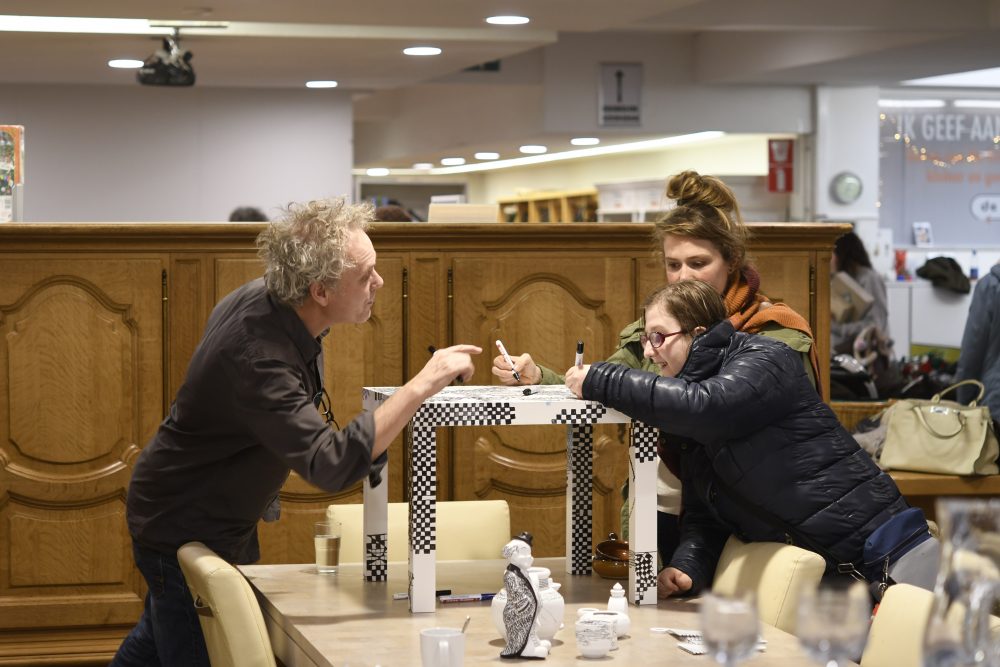
Kringwinkel Merksem, January 2020. Photo Carlos Dekeyrel
What's The Veerman?
De Veerman is an arts organization that focuses on public participation: it opens up art to new audiences, reflects on social issues from the arts, encourages the development of artistic talent and builds an artistic transdisciplinary workplace. It works together with De Singel in Antwerp, Het Kaaitheater in Brussels and many other artistic and social parties.
Why a residency at De Veerman?
I recognize myself in the way De Veerman literally puts art into action. Interaction and participation with and between individuals, groups and institutions. Art is an independent entity in a work process and is not reduced to an instrument to serve something else. The combination of art, participation and education makes De Veerman a unique resident in the artistic landscape in Belgium and the Netherlands.
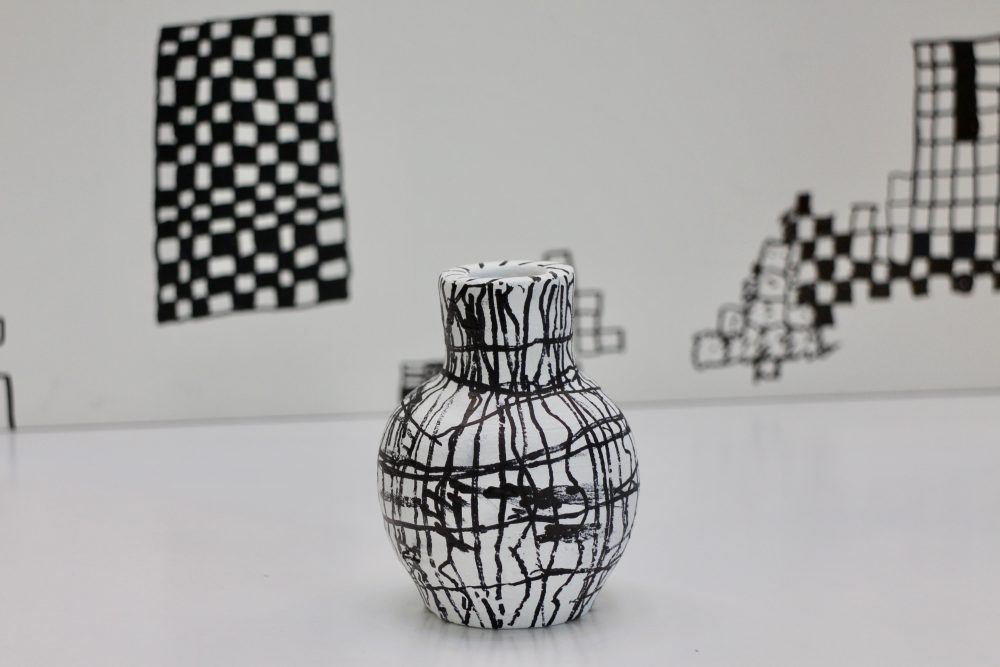
Vase meant by Mohammed, CO Nova, December 2019
During the residency, what did you do first?
Before the residency started, I went to find out what possibilities the location and the city offer. By first looking around in Antwerp and talking to people, I came to a plan. I started a project with the title United Objects.
I take white painted tables, chairs, etcetera, and invite passers-by to draw on them together.
United objects, what should the reader make of that?
Oh, yes, maybe I'll tell a brief history first. So since 2017, I've been moving my studio into public spaces, into malls, festivals, or just down the street. I take white painted tables, chairs, et cetera, and invite passers-by to draw on them together. The squares, circles and stripes we draw can be seen as a continuation of minimal art, Zero, Schoonhoven, that work. But it takes a long time to signify a piece of furniture with a pattern, so each piece is also signified by 50-250 people.
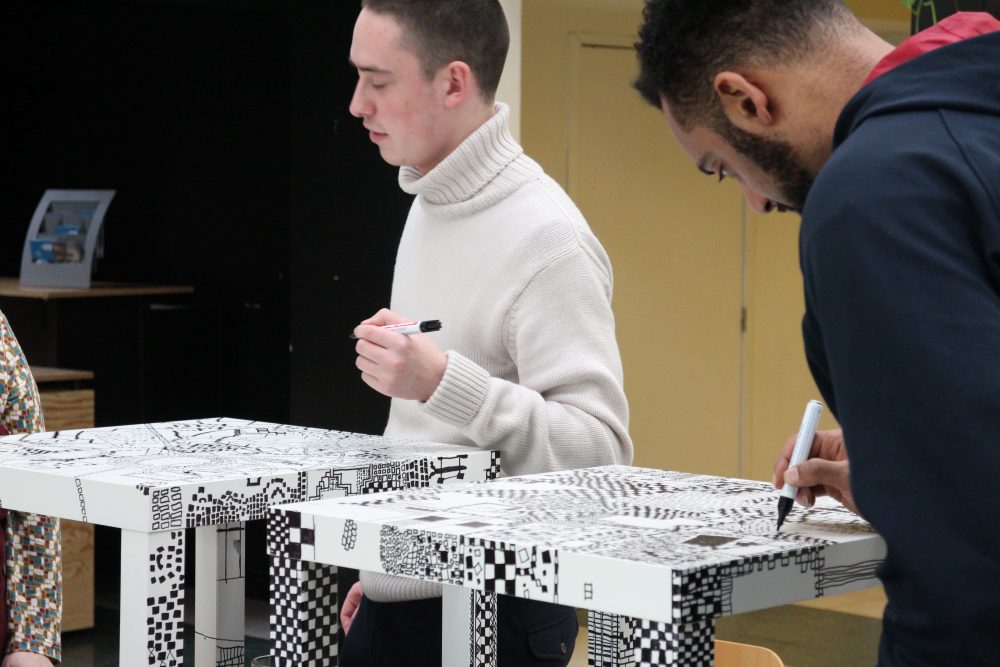
Nova Cultural Meeting Centre, February 2020
People who participate get talking to each other and to me, the drawing is contagious. It creates a bond to make a special thing together, people unite for a while. Or for longer, I know of a friendship that came about this way. Sometimes a piece of signified furniture stays behind, like in a shopping mall; sometimes it continues to be signified at another location and sometimes I keep it.
This is how the idea of drawing with the public on small utensils came about.
After two years I wondered how it would work if someone could sign a small object all by themselves. This is how the idea arose to draw on small utensils with the public. I chose fifty random objects in and around my studio and painted them white. I was able to test the meaning of these objects with the public last July during a residency at the Summer Academy in Brussels. The Summer Academy is a project of De Veerman where there are about ten studios and participants work on their own under the guidance of a gifted artist-coach. Anyway, that's how I came up with the title.
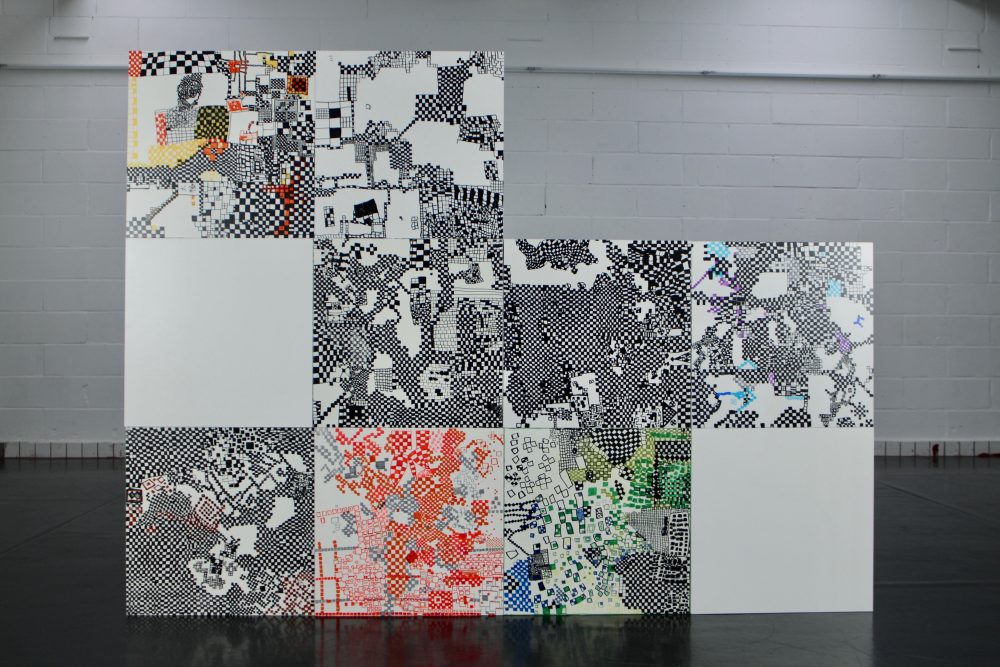
Studio setup at De Veerman with Ikea tables meant on location, December 2019
I heard that certain objects from the collection of the MAS, the museum of the city of Antwerp, play a role in your project.
Yes, yes! Once in a while I find myself in the right place at the right time with the right thoughts! With the 'Jaap Kruithof Collection' the MAS has acquired a collection of objects that is large, far too large. It is a collection of 10,000 objects with a philosophical basis.
In those days he already called himself an ecologist and was strongly opposed to the 'throw-away society'.
Kruithof was a monument in Flanders in the 80s and 90s. As a professor of philosophy and ethics in Ghent, he constantly stirred people's emotions. At the time he called himself an ecologist and was vehemently opposed to the 'throwaway society'. He started collecting discarded utensils, souvenirs and other things he found in thrift shops and at flea markets.
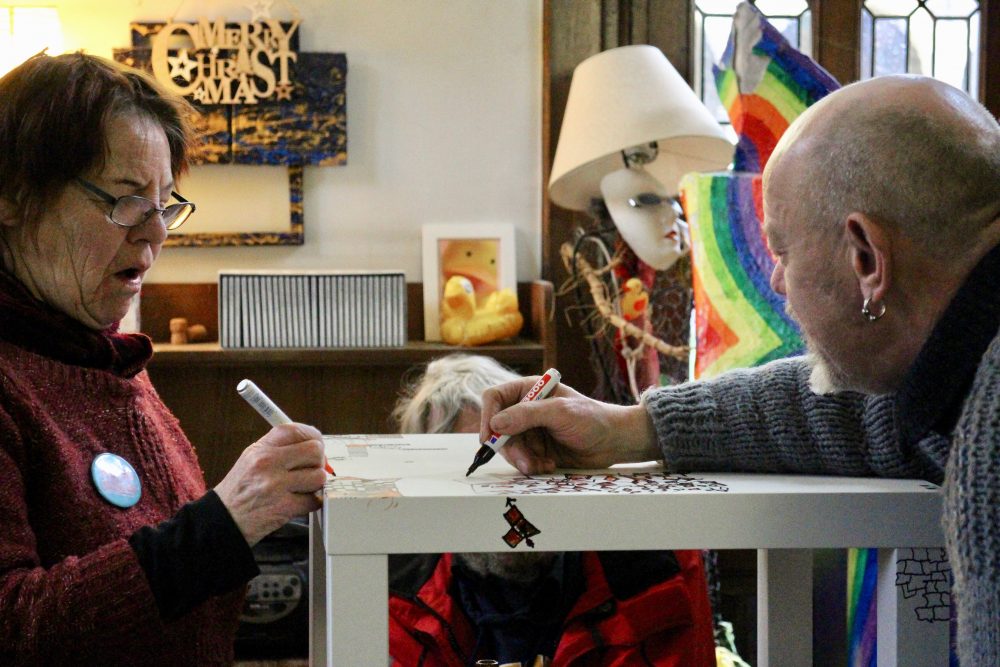
OXOT Antwerp, February 2020
Anyway, the MAS decided to give away half of the objects to people and organizations who had an idea how to upgrade them. I immediately thought: I'll paint them white and start drawing on them with the public. I was lucky enough to get 5 boxes of stuff, about 200 of them. I call them Kruithof objects.
How did you go about using the objects in a concrete way?
First I started looking for locations in the (semi-) public space. I wore out the back wheel of my bicycle completely on the cobblestones and bumps in the road everywhere. I ended up at cultural centres, meeting places, thrift stores and the library, among other places. There I started inviting passers-by and visitors to sign white Ikea side tables with squares. While drawing, I told about the Kruithof objects and their purpose. Participants could take such a Kruithof object home to signify with lines. Some of them did this immediately on location.
After the 'Reunion' the artists will leave the works of art somewhere in a public space in the centre of Antwerp. As a gift to other inhabitants of the city.
In October or November, everyone who participated will come together for the Reunion of Kruitcourt objects in the MAS. All the signified objects will be shown for two hours to each other and the public. After the 'Reunion' the artists will leave the works of art somewhere in a public space in the centre of Antwerp. As a gift to other inhabitants of the city. Well, if the situation allows it of course, initially the 'Reunion' was supposed to take place on April 4th. Hopefully I can finish the project this fall, Corona-wise.
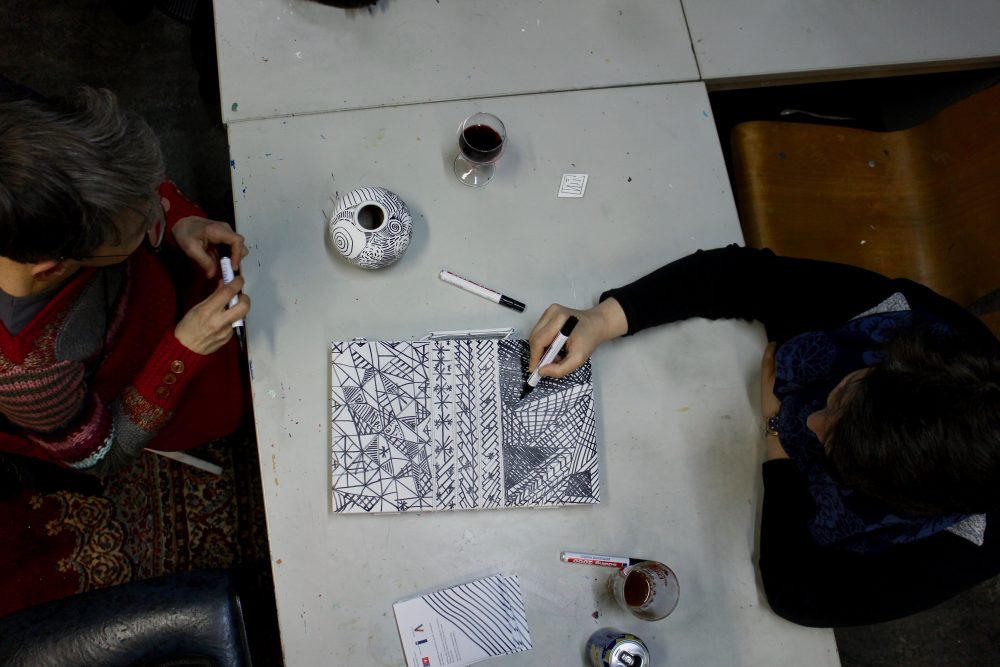
OXOT Antwerp, February 2020
I write short stories about the encounters and events that take place while drawing. I post them on the site of United Objects. I'm surprised how often they get read (laughs).
You've been in Antwerp for a year now. What is it like to work there?
Living and working somewhere for a year is the ideal way for me to get to know another city and culture. De Veerman is located in a wonderfully spacious and messy building in Berchem. In the garden is the biggest magnolia I have ever seen. Besides the office, there are studios of other artists, a silk-screen workshop Gezeever and a theatre/dance studio.
My workspace is in the passageway to the kitchen on the 1st floor. Some days it is quiet but most of the time visitors come by for discussions of new projects or just for a cup of coffee. I meet all kinds of colleagues from various disciplines. Every afternoon lunch is prepared in the Flemish way with salad, pasta, soup or other hot dishes.
Contacts for work are easily made, and collaborations are quickly established. The reputation and network of De Veerman opens many doors. Although not so much in the art scene.
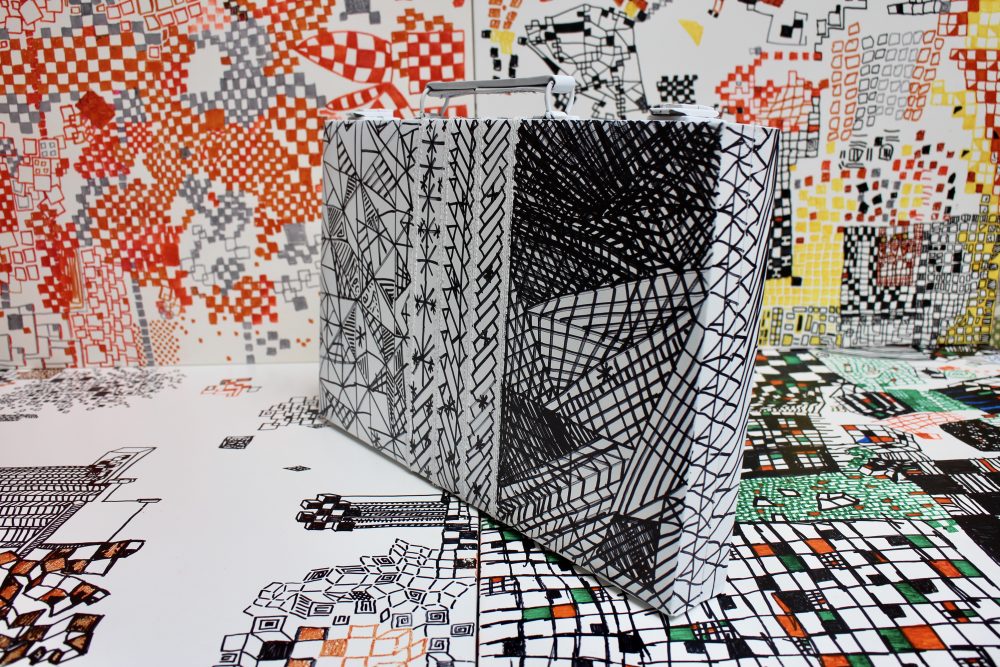
Atelier situation De Veerman with on location meant Ikeatafels and deedcase meant at OXOT Antwerpen, February 2020
With the public I notice a little more waiting than in the Netherlands, but there are many people who participate and, oh yes, also help!
People are very warm and approachable when they meet spontaneously in a café or on the street, but less likely to meet again later.
And the living, is Antwerp as cool as anyone says?
You won't believe this. A generous couple has provided an apartment in the middle of the historic center. With wifi!
For the evenings and weekends, I am on my own. There I get to know the differences between Flemish and Dutch culture in a different way. People are very warm and approachable during a spontaneous meeting in a bar or on the street, but less easy to meet again later on. It seems I am not the first to run into unexpected cultural differences, books are full of them.
The language is the same but the way of giving meaning is different. A decisive part of the daily interaction between people is attributed to centuries of domination by foreign conquerors, including the Netherlands. The influence of the catholic church still works in the present generation. In conversation, everyone is accommodating, they give little criticism or comment, and then they do things in their own way (not/differently).
I'm still not quite used to this indirect communication. Fortunately, it doesn't bother me at work.


